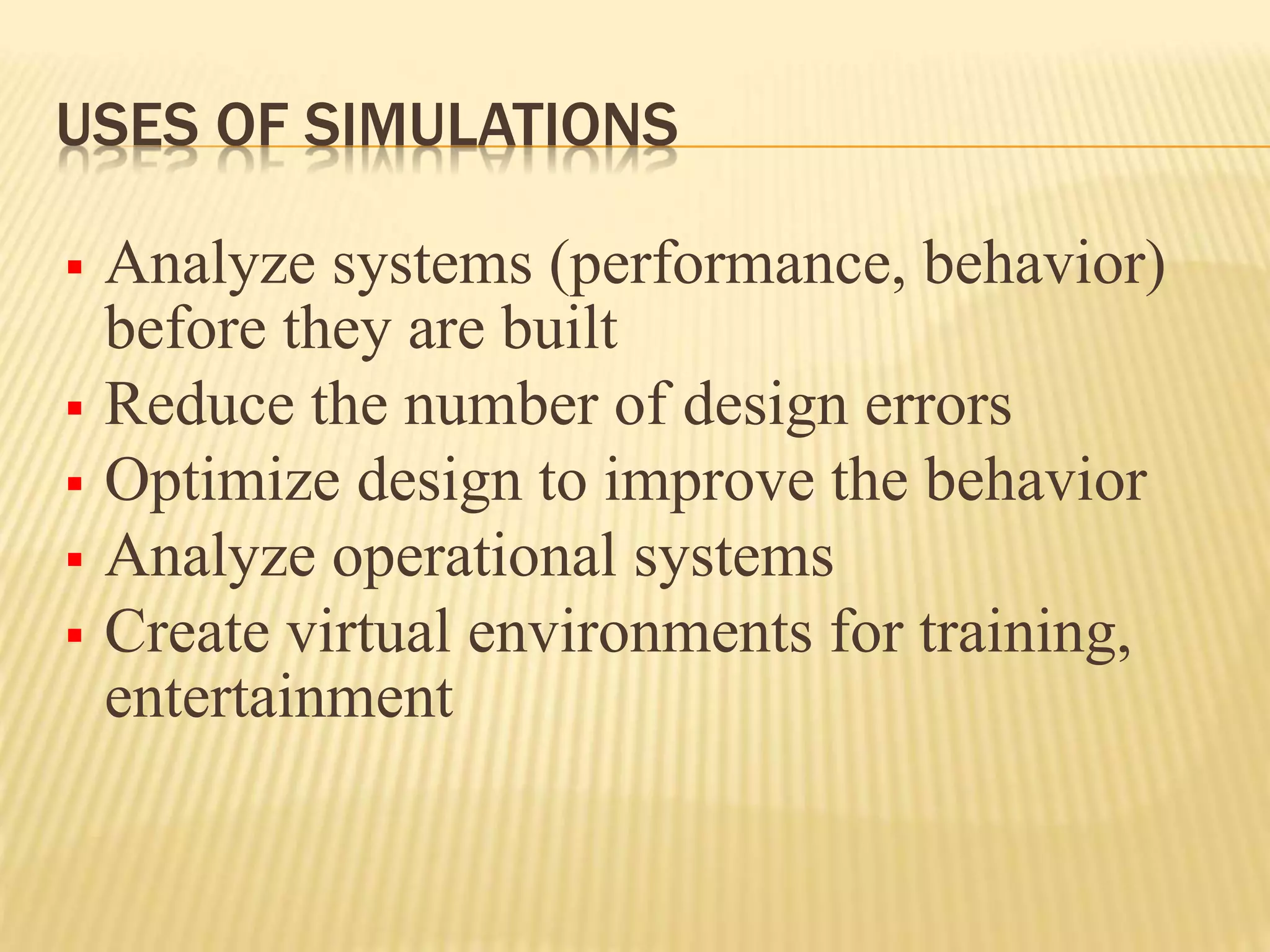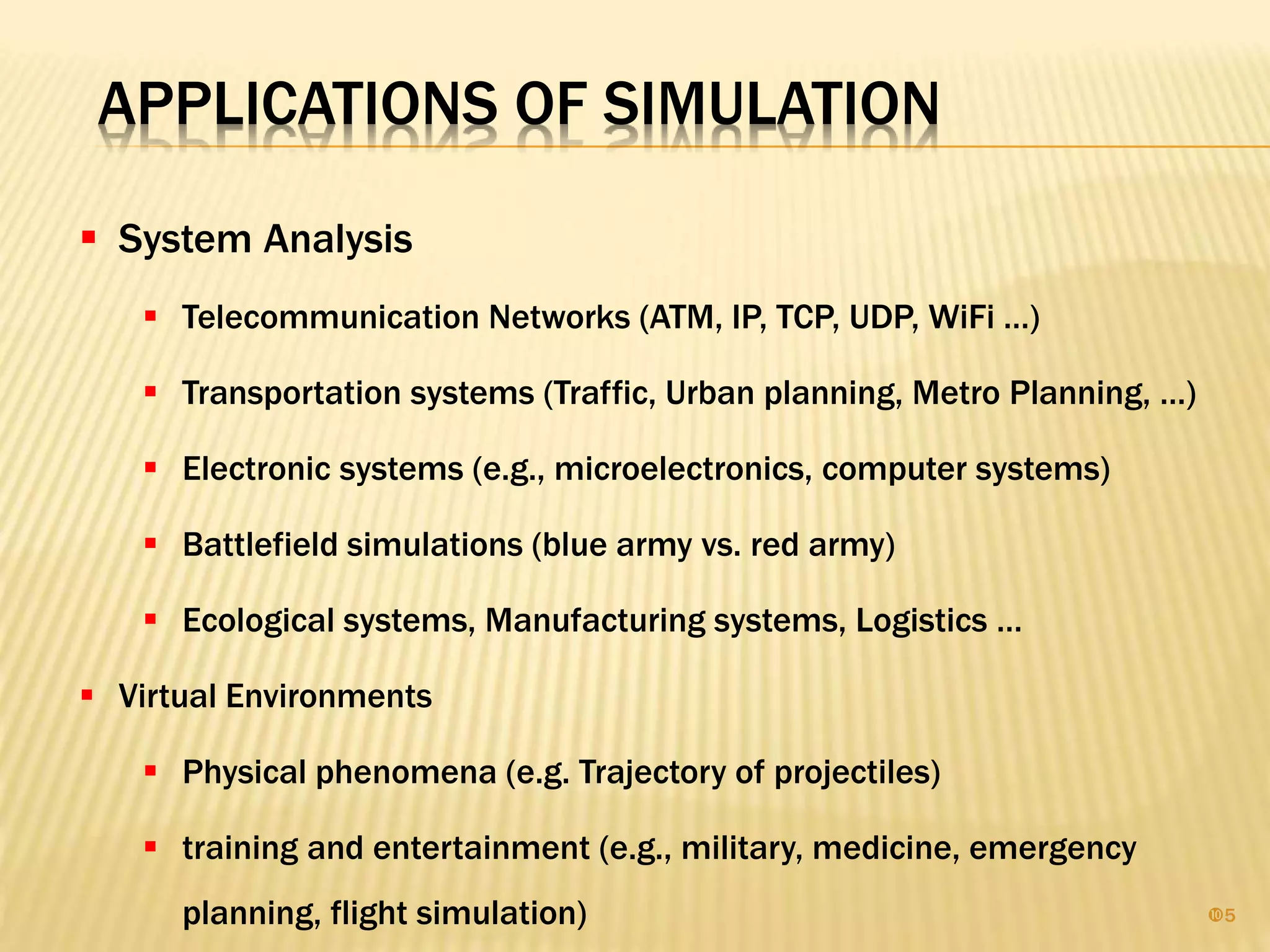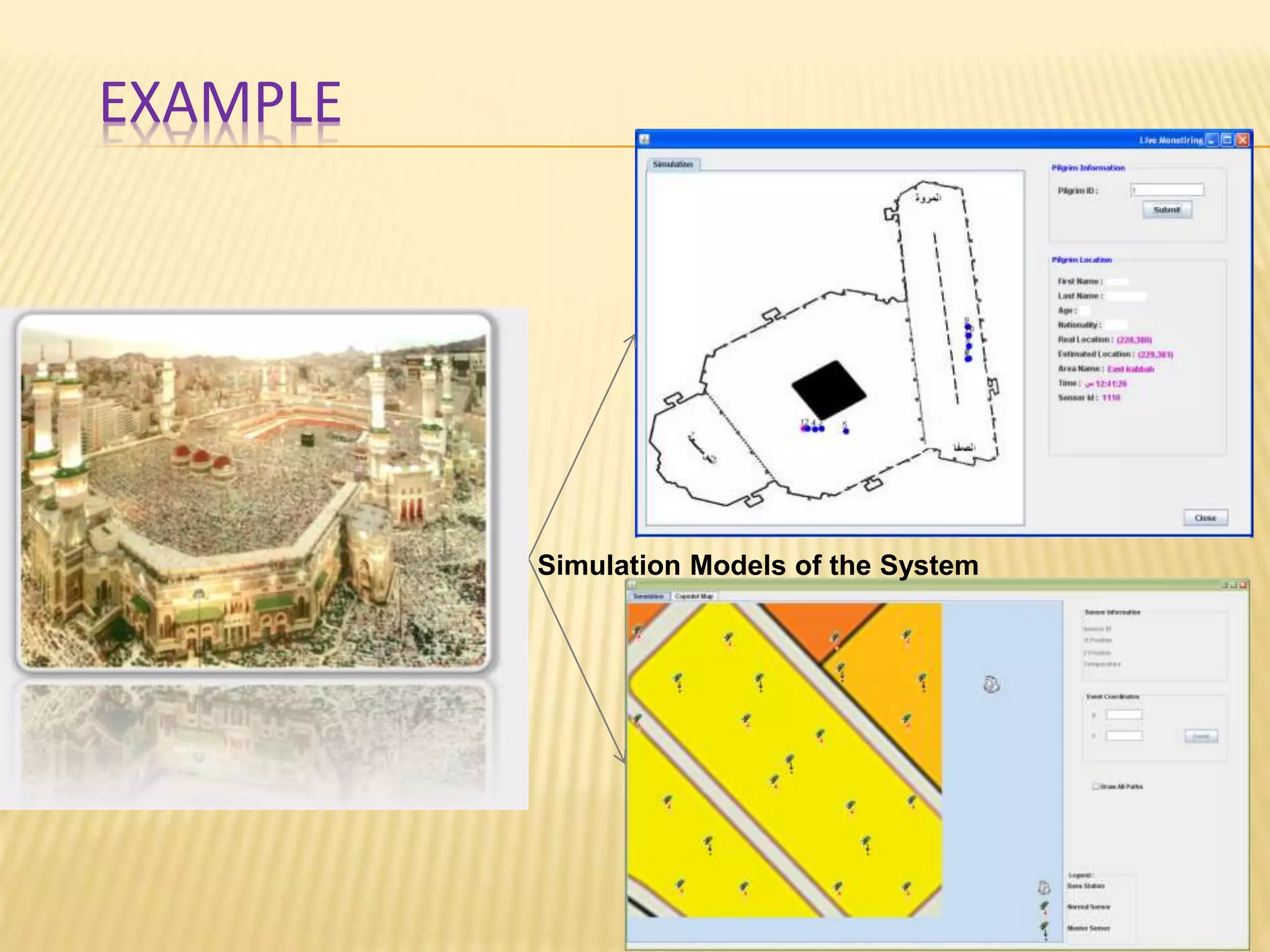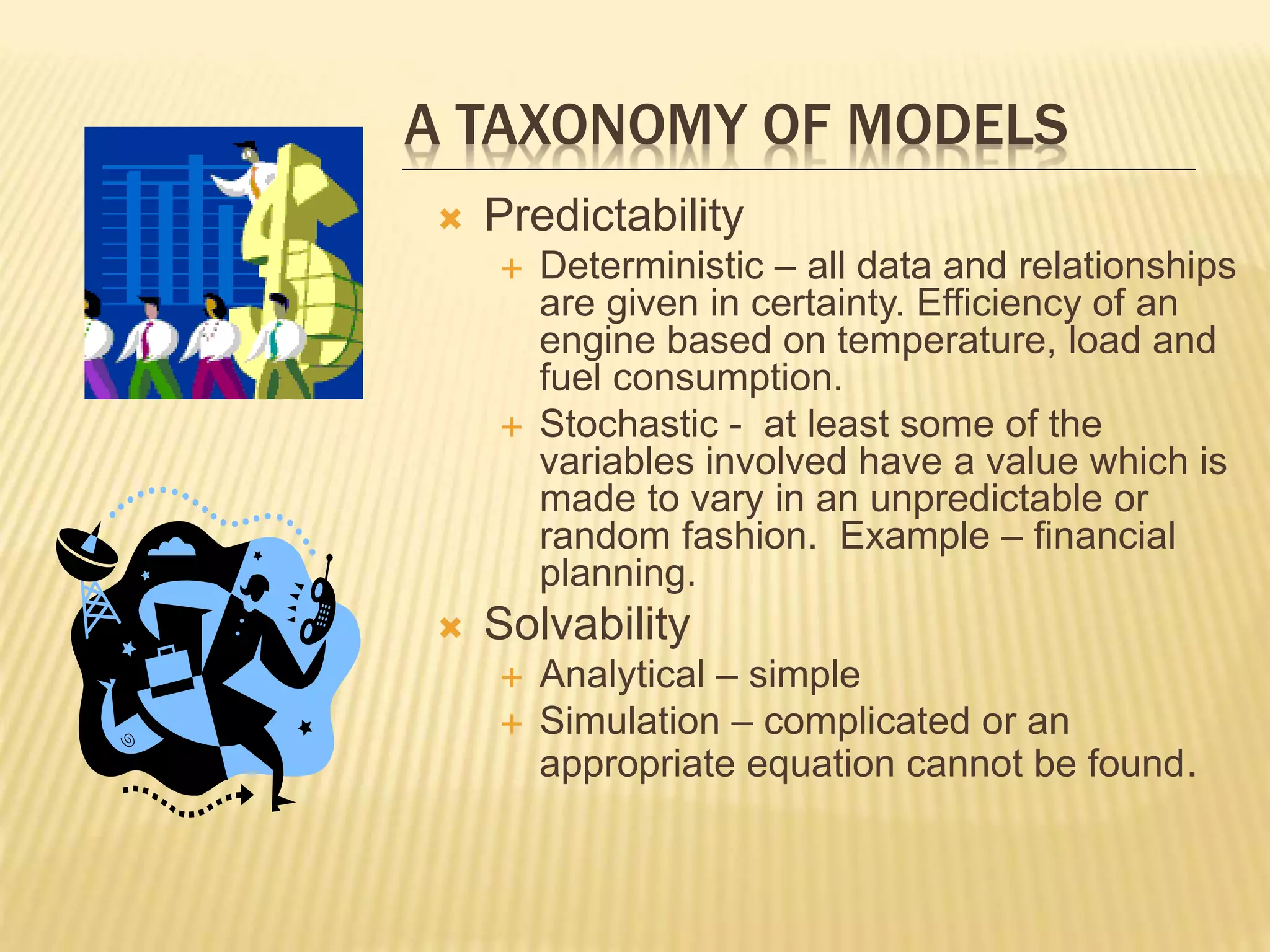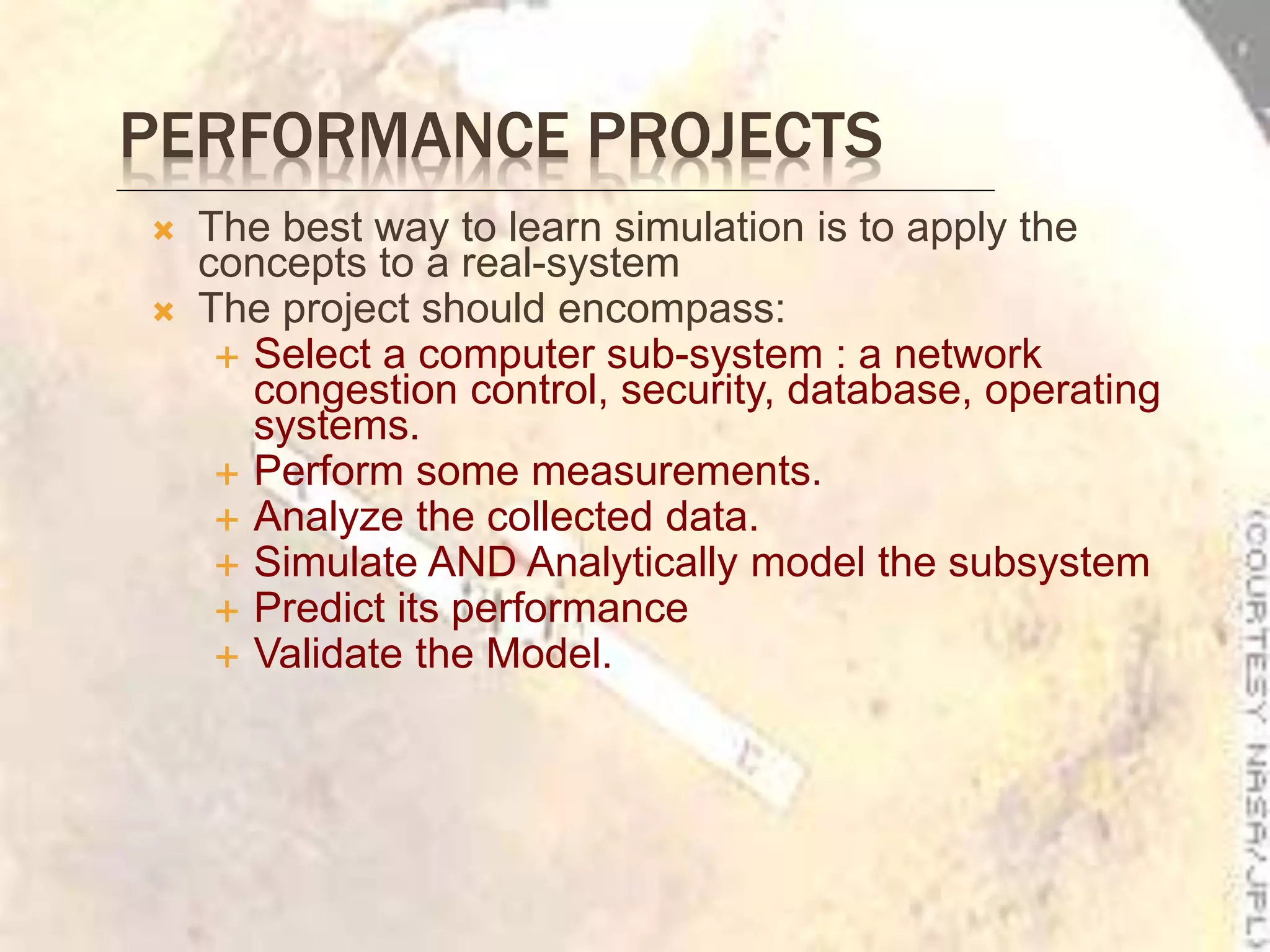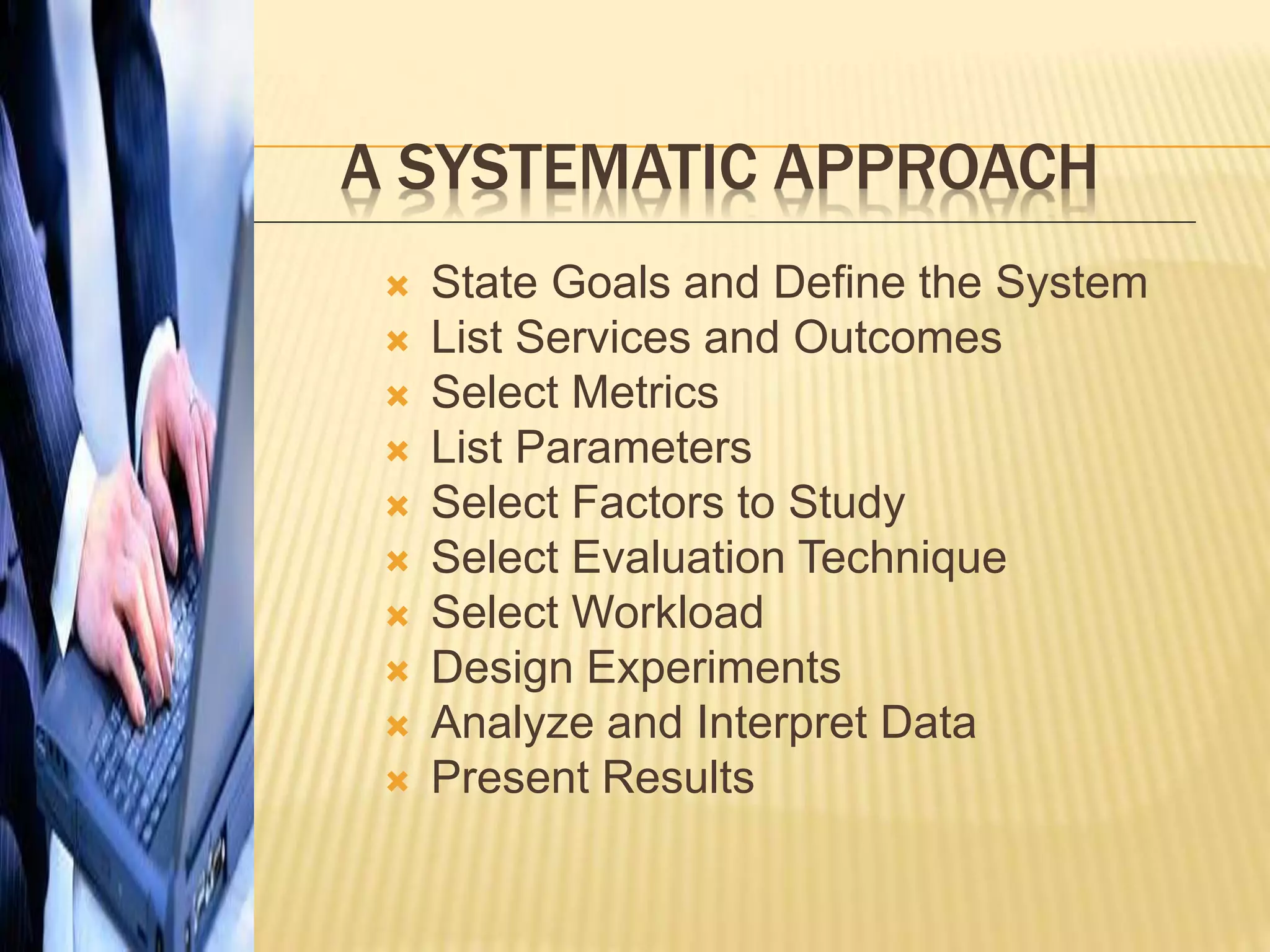The document provides an overview of performance evaluation and simulation, highlighting the importance of selecting appropriate techniques and metrics to assess system performance. It covers the reasons for using simulations, various applications across different fields, and outlines common mistakes in performance evaluation that should be avoided. Additionally, it discusses modeling, metrics, and a systematic approach to conducting performance projects effectively.



